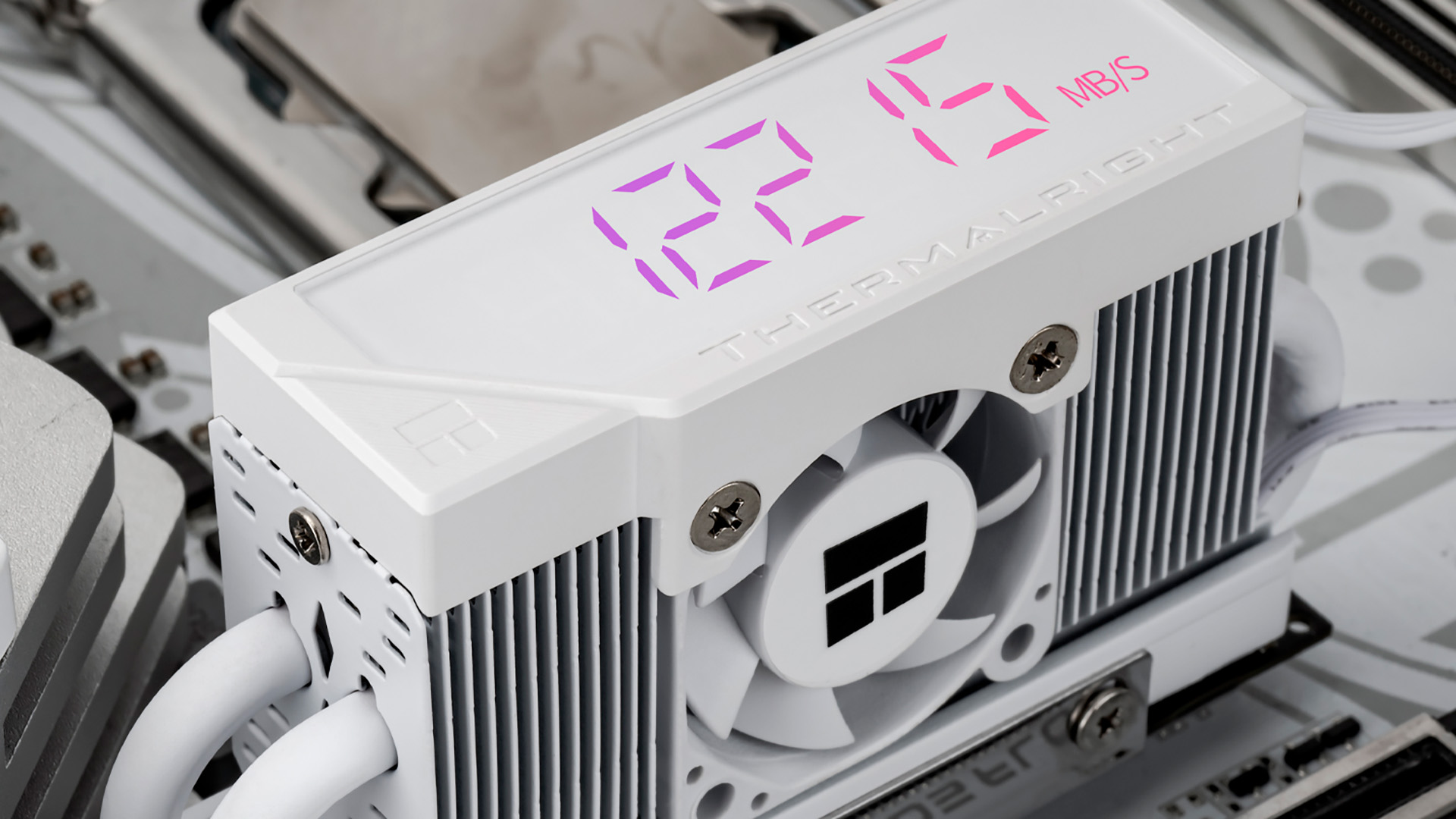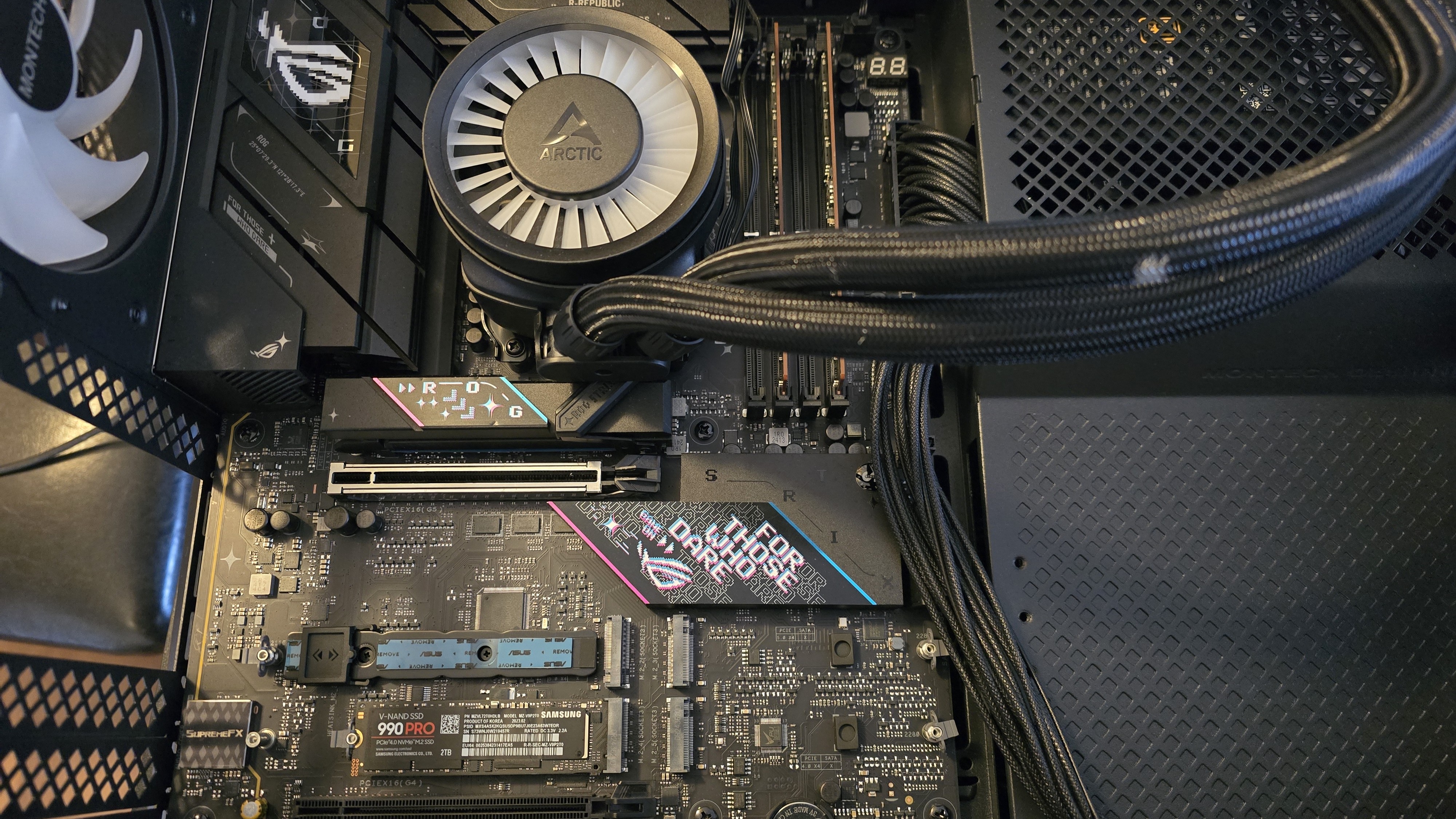Are you curious about whether your Solid State Drive (SSD) needs cooling? You’re not alone.
As SSDs become more popular, many people wonder if these powerful devices require extra care to maintain optimal performance. Imagine your SSD working at its best speed, delivering fast boot times and quick data transfers without breaking a sweat. Sounds great, right?
But there’s a catch. Without proper cooling, your SSD might not perform at its peak, potentially shortening its lifespan. Understanding the cooling needs of your SSD is crucial. By the end of this article, you’ll know whether your SSD needs cooling and how to ensure it runs smoothly and efficiently. So, let’s dive in and keep your tech running at its best!

Credit: www.tomshardware.com
How Ssds Generate Heat
Solid State Drives (SSDs) produce heat when they work. Heat comes from the electrical parts inside the drive. The more data the SSD processes, the more heat it creates.
Heat is normal for any electronic device. But too much heat can affect the SSD’s speed and life. Understanding how SSDs generate heat helps in keeping them cool.
Ssd Components That Heat Up
Not all parts of an SSD get hot. Some key components produce most of the heat. These parts work hard to read and write data quickly.
The main parts that heat up are the controller chip and the memory chips. The controller manages data flow. Memory chips store data temporarily or permanently.
- Controller Chip:Controls data transfer and commands.
- Memory Chips:Store data and handle writing and reading.
- Voltage Regulators:Provide power and can generate heat.
Usage Patterns Affecting Temperature
How you use your SSD changes its temperature. Heavy use makes the SSD work harder and heat up more. Light use keeps it cooler.
Tasks like gaming, video editing, or large file transfers increase heat. Idle or simple tasks cause less heat. Long continuous use can raise SSD temperature significantly.
- High data transfer speed causes more heat.
- Continuous writing or reading raises temperature.
- Short bursts of activity produce less heat.
- Cool environments help keep SSD temperature low.
Risks Of Overheating Ssds
SSDs can get hot when used for a long time or under heavy work. Too much heat can cause problems.
It is important to know what happens if an SSD overheats. This helps protect your data and device.
Performance Throttling
When an SSD gets too hot, it slows down to cool off. This is called performance throttling.
Slowing down helps prevent damage but reduces speed and makes your computer slower.
- Slower read and write speeds
- Longer loading times
- Less smooth multitasking
Reduced Lifespan
Heat can wear out SSD parts faster. This shortens the life of your drive.
High temperatures cause more errors and damage the memory cells inside the SSD.
- Memory cell degradation
- More frequent hardware failures
- Need to replace SSD sooner
Data Integrity Concerns
Overheating can cause data loss or corruption. Your files may become unreadable or lost.
Heat affects the way data is stored and can lead to errors during transfer or saving.
- Corrupted files
- Failed data writes
- Increased risk of data loss
Signs Of Ssd Overheating
SSDs can get hot when they work hard. Too much heat can cause problems.
Knowing the signs of overheating helps protect your SSD and data.
System Warnings
Your computer may show warnings if the SSD is too hot. These alerts tell you to check the drive.
Warnings can appear as pop-ups or messages during startup or use.
- Temperature alerts from system monitoring tools
- Messages about drive health or errors
- Beeping sounds or LED signals on some devices
Unexpected Shutdowns
Overheating can make your SSD stop working suddenly. This may cause the computer to shut down.
The system may restart or turn off without warning to protect the SSD.
- Computer turns off during heavy SSD use
- Sudden restarts without error messages
- Frequent shutdowns when copying large files
Slow Read/write Speeds
Heat can slow down your SSD’s data transfer speeds. This affects how fast files open or save.
Slower speeds may mean the SSD is reducing performance to cool down.
- Longer times to open files or programs
- Delays when saving or moving files
- Lag during video editing or large transfers

Credit: www.reddit.com
Cooling Solutions For Ssds
SSDs can get warm during use, especially high-speed models. Cooling helps keep them working well and lasts longer.
There are different ways to cool SSDs. Some do not use power, while others use small fans or heat sinks.
Passive Cooling Methods
Passive cooling uses no fans or power. It relies on good airflow inside the computer case. Good case design helps cool all parts, including SSDs.
Placing the SSD where air moves freely helps heat escape. Using cases with vents or mesh panels also aids cooling.
- Good airflow inside the case
- Position SSD away from hot parts
- Use cases with vents or mesh
Active Cooling Options
Active cooling uses fans or liquid cooling to lower SSD temperatures. Small fans can be placed near SSDs for direct airflow.
Liquid cooling systems can also cool SSDs but are more common for CPUs and GPUs. Fans are easier and cheaper for SSD cooling.
- Small fans blow air directly on SSDs
- Liquid cooling cools multiple parts
- Fans are simple and cost-effective
Thermal Pads And Heat Sinks
Thermal pads help move heat from the SSD to a heat sink. Heat sinks are metal pieces that spread heat over a larger area.
Using thermal pads with heat sinks lowers SSD temperature without noise. Many SSDs come with heat sinks for better cooling.
- Thermal pads improve heat transfer
- Heat sinks spread heat away from the SSD
- Quiet and effective cooling solution
Optimising SSD Placement
SSDs can get warm during use, so placing them correctly helps keep them cool. Proper placement stops overheating and keeps your SSD fast.
Good SSD placement means putting it where heat is low and air moves well. This helps your SSD last longer and work better.
Avoiding Heat Sources
Keep your SSD away from parts that get hot. These include the CPU, GPU, and power supply. Heat from these parts can raise SSD temperature.
Placing the SSD far from these heat sources reduces the chance of overheating. This helps the SSD stay cool and perform well.
- Do not place the SSD near the CPU cooler
- Avoid spots close to the graphics card
- Keep away from the power supply unit
- Use separate compartments if possible
Ensuring Proper Airflow
Airflow moves heat away from the SSD. Good airflow means cool air flows in and hot air flows out of the computer case.
Place the SSD where air can reach it easily. Avoid tight spaces or blocked areas to help air cool the drive.
- Mount the SSD near the case fans for better airflow
- Do not block SSD vents with cables
- Use SSD mounts designed for airflow
- Keep the inside of the case clean from dust

Credit: www.tomshardware.com
Monitoring SSD Temperature
SSDs can get warm when they work hard. Watching their temperature helps keep them safe.
Too much heat can slow down SSDs or cause damage. Checking the heat early can stop problems.
Software Tools To Track Heat
Many software tools show the SSD temperature in real time. These tools help you see if the drive is too hot.
Some popular tools include CrystalDiskInfo, HWMonitor, and SSD manufacturers’ own apps. They give easy-to-read data.
- CrystalDiskInfo shows the health and temperature of drives
- HWMonitor tracks many sensors, including SSD heat
- Samsung Magician works for Samsung SSDs
- ADATA SSD Toolbox is for ADATA drives
Setting Temperature Alerts
You can set alerts in some software to warn you if the SSD gets too hot. This helps you act fast.
Alerts can notify you by sound or message. You can set safe temperature limits based on your SSD model.
- Choose a maximum temperature to avoid damage
- Set notifications to warn when limits are reached
- Some tools can log temperature data over time
- Use alerts to prevent slowdowns or failures
When Cooling Is Not Necessary
Solid State Drives (SSDs) produce less heat than older hard drives. Often, they do not need extra cooling to work well.
Many SSDs operate safely at normal room temperatures. Cooling is only needed in certain cases.
Low Usage Scenarios
If you use your SSD for simple tasks, it stays cool naturally. Light activities do not make it hot enough to need cooling.
Tasks like web browsing, document editing, or media playback keep SSD temperatures low. Cooling fans or heat sinks are usually not required.
- Office work with few file transfers
- Casual internet use
- Watching videos or listening to music
Modern Ssds With Built-in Heat Management
Newer SSD models have built-in features to control heat. They adjust performance to avoid overheating automatically.
These SSDs can work safely without extra cooling in most settings. They include temperature sensors and thermal throttling.
- Temperature sensors monitor heat levels
- Thermal throttling slows speed to reduce heat
- Firmware manages heat without user action
Best Practices To Prevent Overheating
SSDs can get warm during use, but most do not need extra cooling. Still, keeping them cool helps performance and lifespan.
Use simple steps to stop SSDs from getting too hot. This will protect your data and keep your system running well.
Regular Firmware Updates
SSD makers release firmware updates to fix bugs and improve performance. Updates can also help manage heat better.
Check your SSD’s website or software to find updates. Install them to keep your SSD working safely and cool.
Balanced Workloads
Running heavy tasks for a long time can make SSDs very hot. Spread out your work to avoid overheating.
Try to avoid doing too many data transfers or large file writes all at once. Give your SSD time to cool down.
- Divide big tasks into smaller parts
- Pause between heavy uses
- Use SSDs designed for high workloads if needed
Proper System Ventilation
Good airflow inside your computer helps keep SSDs cool. Make sure fans and vents are clean and not blocked.
Place your computer where air can move freely. Avoid tight spaces or stacking devices that trap heat.
- Clean dust from fans and vents regularly
- Use extra case fans if needed
- Keep your PC in an open, cool area
Frequently Asked Questions
Do Ssds Overheat Without Cooling?
SSDs generate less heat than HDDs but can still overheat under heavy use. Proper airflow or passive cooling usually suffices to maintain safe temperatures and ensure optimal performance.
Is Cooling Necessary For Nvme Ssds?
NVMe SSDs run faster and hotter than SATA SSDs. Cooling helps prevent thermal throttling, maintaining speed and reliability during intense tasks like gaming or video editing.
What Happens If An Ssd Gets Too Hot?
Excessive heat can cause SSDs to throttle speed, reduce lifespan, or even fail. Keeping temperatures within manufacturer limits ensures stable performance and longer device life.
Can I Use A Heatsink For My Ssd?
Yes, installing a heatsink on an SSD improves heat dissipation. It helps maintain lower temperatures and prevents thermal throttling during demanding workloads.
Conclusion
SSDs usually do not need extra cooling for daily use. They run cooler than traditional hard drives. Still, heavy tasks can raise their temperature. Keeping your computer in a cool place helps. Good airflow inside the case matters a lot.
Simple steps can protect your SSD and keep it fast. So, basic care is enough for most users. Cooling matters only in extreme or heavy use. Stay aware of your device’s heat for best results.
